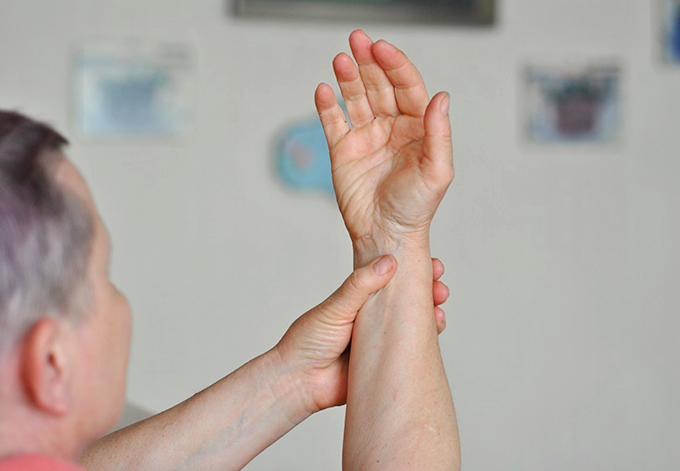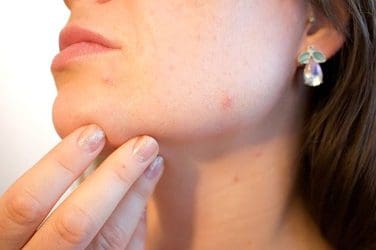words Al Woods
If you’re a phlebotomist, then you know how important it is to be able to find veins quickly and easily. After all, the faster you can find a vein, the less discomfort your patient will feel.
However, sometimes finding veins can be a real challenge – especially if your patient has very dark skin. That’s where a vein finder comes in handy.
That’s where a vein finder comes in handy. A vein finder is a small, handheld device that is used to make veins more visible. And in this blog post, we’re going to show you how to use one! Keep reading to learn more.

How Vein Finder Helps in Phlebotomy
As you may already be aware, a vein finder is a handheld device that uses infrared light to locate veins beneath the skin surface.
It is commonly used in phlebotomy and other medical procedures to help locate veins for puncture. The device is composed of a handle and a head that emits infrared light.
To learn more about microphlebectomy and other vein-related procedures, it’s essential to explore how these technologies are revolutionizing medical practices. Even if a healthcare professional has experience in phlebotomy, the use of a vein finder can significantly improve accuracy and efficiency, minimizing discomfort for patients.
A Vein finder can help the phlebotomists in many ways like:
Reduced needle sticks: A vein finder helps to reduce the number of needle sticks, as it allows the phlebotomist to easily locate veins. This is especially beneficial for patients who have difficult-to-find veins.
Increased success rate: The use of a vein finder also increases the success rate of venipuncture, as it allows the phlebotomist to easily locate veins.
Reduced pain: Vein finder also helps to reduce the pain associated with venipuncture, as it allows the phlebotomist to avoid accidentally hitting nerves or other sensitive areas.
Improved Accuracy: The use of a vein finder also improves the accuracy of venipuncture, as it allows the phlebotomist to easily locate the veins in one go instead of multiple attempts.
How to Use a Vein Finder for Phlebotomy
Choose the right vein finder for your needs. There are many different types of vein finders in the market. Some use infrared light, while others use ultraviolet light. Choose a vein finder that will work well with your skin type and the type of venous access you’re looking for.
Clean the Area:
Clean the area where you’ll be using the vein finder. Be sure to use an alcohol swab or another disinfectant to clean the skin. This will help ensure that you don’t introduce any bacteria into the patient’s bloodstream.
Scan the vein finder on the skin:
Follow the instructions that come with your particular device. Most vein finders need to be held against the skin for a few seconds in order for them to work properly.
Look for the vein:
The vein should appear as a dark line on the surface of the skin. If you’re having trouble locating the vein, try moving the vein finder around slightly until the vein becomes more visible.
Mark the vein with a pen:
Once you’ve found the vein, use a pen or marker to mark the area. This will help you know exactly where to insert the needle when you’re ready to draw blood.
Insert the needle into the vein:
Now, insert the needle into the vein to draw blood. Be sure to insert the needle at a slight angle so that it doesn’t slip out of the vein. Once the needle is in place, draw the blood into the syringe.
Remove the Needle:
Remove the needle and apply pressure to the area. Once you’ve finished drawing blood, remove the needle and apply pressure to the area with a cotton ball or gauze pad. This will help stop any bleeding.
Vein finders are a valuable tool for phlebotomists. They can help you locate veins quickly and easily, which can make the process of drawing blood much easier. With a little practice, you’ll be able to use a vein finder like a pro.
Are There Any Risks Associated With Phlebotomy
There are no major risks associated with phlebotomy. However, there are a few things you should keep in mind during the process as you would with any other medical procedure.
- First, be sure to clean the area before you use the vein finder. This will help prevent any bacteria from being introduced into the patient’s bloodstream.
- Second, be careful not to hit any nerves or other sensitive areas when you’re inserting the needle. If you do, it could cause the patient some pain.
- Finally, be sure to apply pressure to the area after you’ve removed the needle. This will help stop any bleeding otherwise you may need to use a bandage.
Phlebotomy is a relatively safe medical procedure. However, there are a few things you should keep in mind to help ensure a successful and complication-free experience.
With a little practice and care, you’ll be able to master the art of using a vein finder like a pro.
Some FAQs About Phlebotomy
1. What is phlebotomy?
Phlebotomy is the process of drawing blood from a vein. This can be done for a variety of reasons, such as to collect a blood sample for testing or to donate blood.
2. Is phlebotomy painful?
No, phlebotomy is not usually painful. However, you may feel a slight pinch when the needle is inserted into the vein.
3. How do I know if I have good veins for phlebotomy?
One way to check is to look at your arms in the mirror. If you can see your veins easily, then they’re probably good veins for phlebotomy. You can also ask your doctor or a phlebotomist to check your veins.
5. How long does phlebotomy take?
Phlebotomy usually takes only a few minutes. However, the actual time it takes will depend on factors such as how easy it is to find your veins and how much blood is being drawn.
6. Are there any risks associated with phlebotomy?
Phlebotomy is a relatively safe medical procedure. However, there are a few precautions you should keep in mind to help ensure a successful and complication-free experience.
Takeaway
So, there you have it! A step-by-step guide on using a vein finder for phlebotomy. Whether you’re a beginner or a pro, we hope this blog post was helpful.
By understanding how to use a vein finder correctly, you can make the process of drawing blood much easier for both you and your patients. So the next time you need to draw blood, be sure to have a vein finder by your side.
If you have any questions or comments, feel free to leave them below. Happy vein finding!









